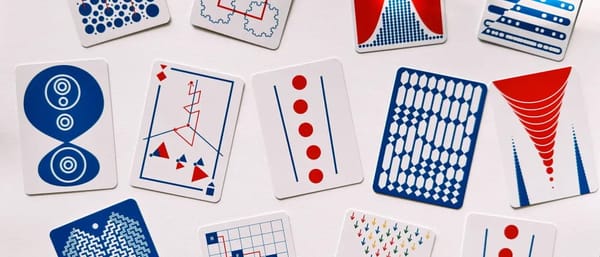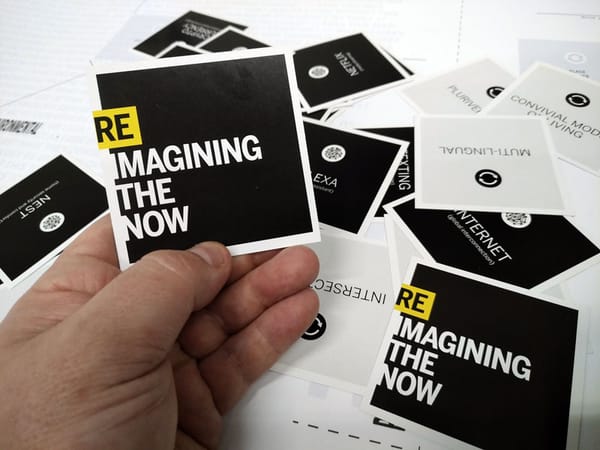№ 93 | Illustrating Complex Systems, Moving Motivators Cards, Working with Team Values, The Eudaimonia Machine, Role-Playing an LLM, Froebel’s Gifts, Senseless Interfaces, and Ojisan Trading Cards
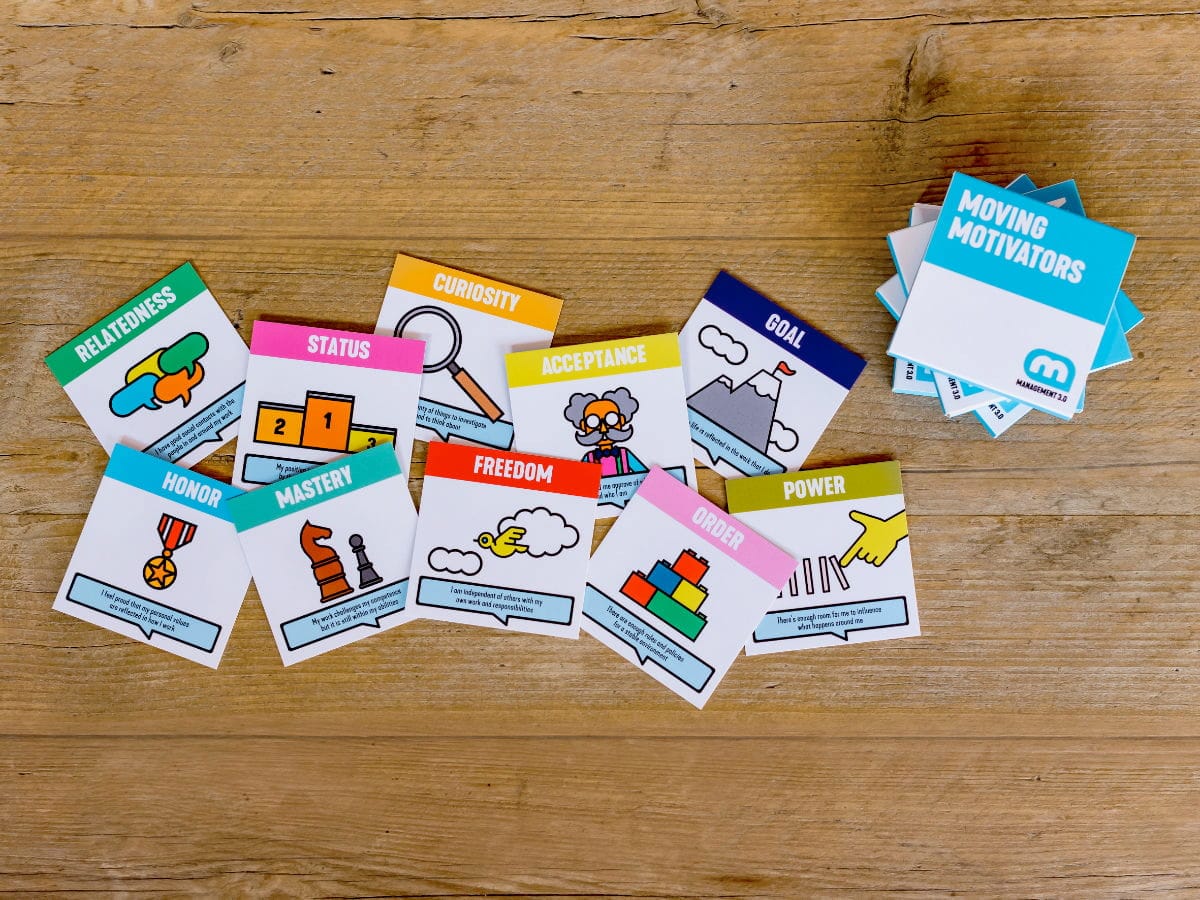
It’s another issue of the Thinking Things newsletter 🎉 .This time, with a few more than usual playful ‘things to think with’ and think about… Enjoy!
30 Illustrated Frameworks for Complex Problems
I tend to shy away from sharing “roundup” sites, and focus more on singular tools, things, methods, games, etc. However, this illustrated collection of over 30 frameworks is too good to not share. These are some of the best frameworks and mental models for thinking about complex systems (Cynefin, Triple Loop Learning, Places to Intervene). Seeing these gathered in one place, and lavishly illustrated… 🧑🍳😙🤌.

H/T Anamaria Dorgo [LinkedIn] for these!
Moving Motivators cards
Fellow play and card deck enthusiast Cat Hase recently shared the Moving Motivators cards [LinkedIn]. Part of the Management 3.0 system, Moving Motivators are a deck of 10 illustrated cards, each representing a core motivation relevant to work-life situations. They’re used by teams to “help us reflect on motivation and how it affects organizational change.” And only 3.00€!
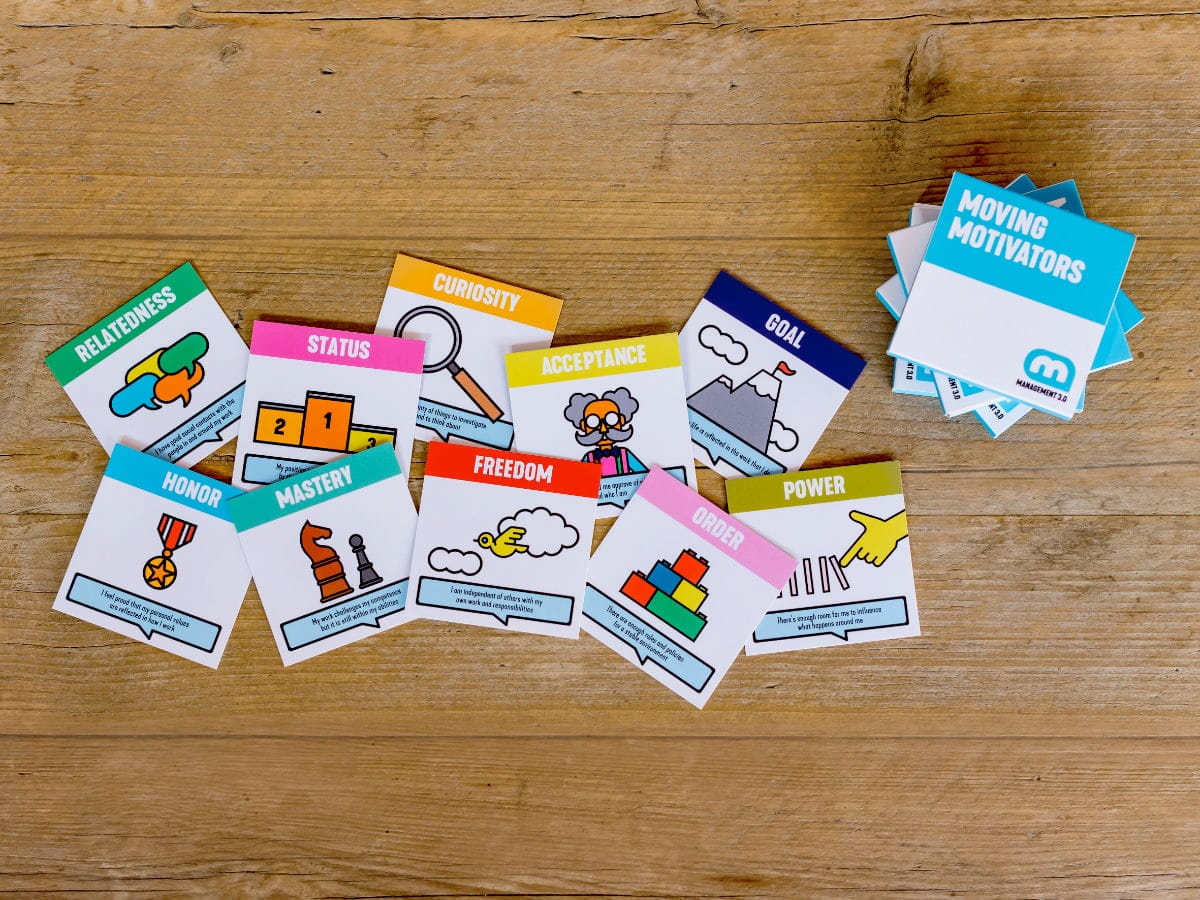
One thing I’m curious about with any deck that offers a roundup of values, motivations, or human drives, is where, exactly, did the list come from? Bonus points for citing their sources:
The Moving Motivators exercise is based on ten motivators, which Jurgen derived from the works of Daniel Pink, Steven Reiss, and Edward Deci. These ten motivators are either intrinsic, extrinsic, or a bit of both
[Post] “Working with teams’ values: Lessons learned over the years”
Similar to how the Moving Motivators cards are used, many of us have likely led or participated in an activity to identify shared team values. How did that work out, really? For the kind of insights that can only come through years of experience, check out this short post from my friend Marco Valente. In it, he shares “a non-comprehensive list of lessons learned over the years, as I worked with teams who needed to work on their values.”
It's taken little time to write, but 16 years to learn it, so it might be worth your time. Four years each insight, you might say.
When experienced folks share how their thinking has changed or evolved—on any topic—I listen. I’ve seen lots of team theater, where we identified Very Import Values that were never lived out in practice. Reading this, it all rings true. Ideal state values vs values in action. The shadow side of values. Going up and down the ladder of abstraction with each value. Modelling versus declaring values. These insights are gold.
The Eudaimonia Machine
How about playful spaces to think with(in)? I’ve long maintained that there isn’t one ideal space to work in—we kind of need different spaces for different activities. Low ceilings and dim lights for focused work. Higher ceilings and natural light for more collaborative and creative activities. And so on.
Anyway… I just learned about The Eudaimonia Machine, a way to think about office space planning, that creates or manufactures well-being.
Essentially, any building that applies these principles would have people move through five zones, each attuned to different needs, and sequenced to lead you into deep work.

To show how this could come to life, there’s a second video where this concept was tweaked and almost became a reality:
I recommend both videos—they’re short and engaging—as ways to think intentionally about the spaces where we work.
Role-playing an LLM?
Hats off to Alexandre Eisenchteter who is making an understanding of AI accessible to a broader audience. I shared his AI Tinkerers deck last year (and also his Case Studies… with a Twist?!). Now, he’s back with a simple idea: Let’s go “inside the black box of large language models,” and role-play how these things actually work! (Check out the link—he shares details on how you too can run this workshop).
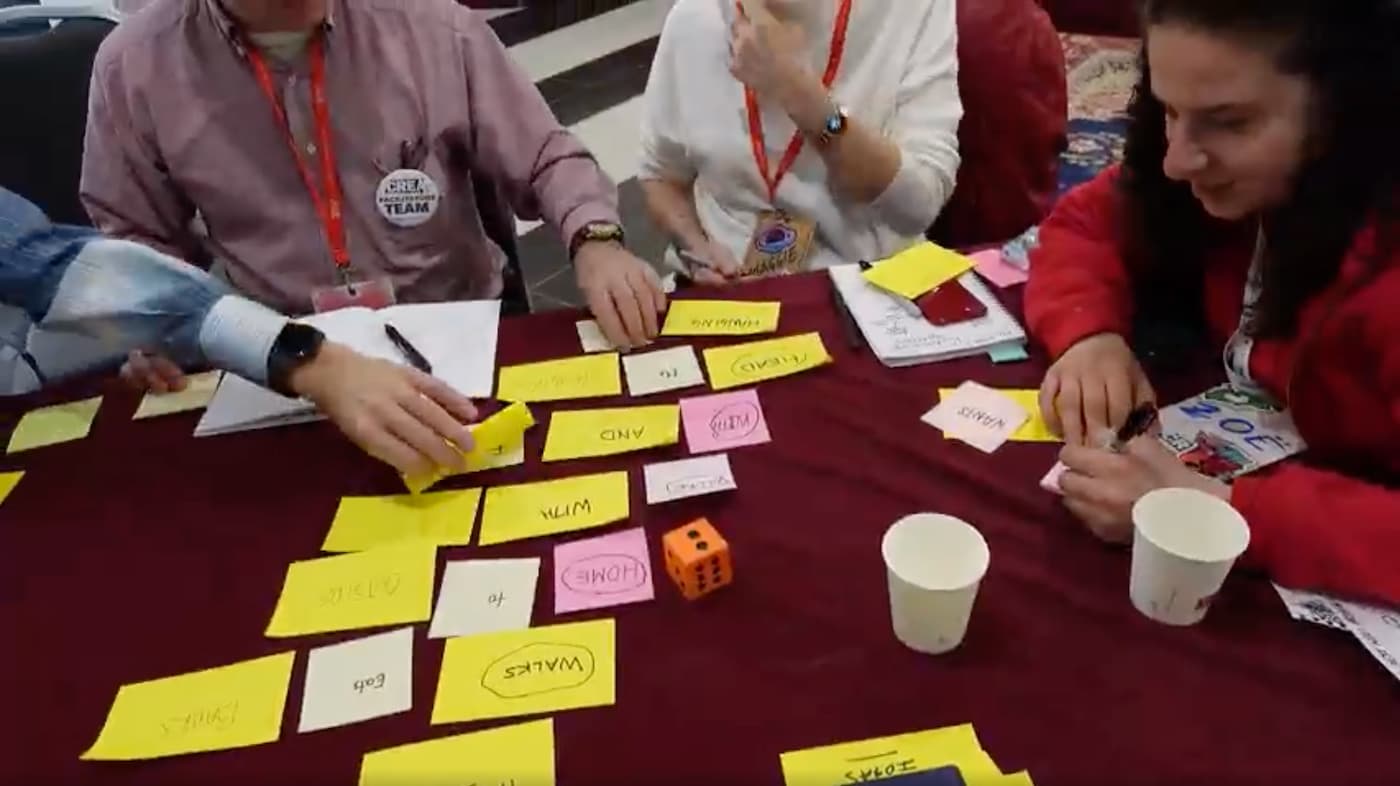
Froebel’s Gifts
Via this 99% Invisible episode, I recently learned about Froebel’s Gifts, a series of educational playthings created in the mid-1800s to teach young children different lessons about shape, structure, and perception.

In a way, Froebel’s Gifts feel like the ‘‘granddaddy’’ of all constructive playthings, which we see today with LEGO bricks or building inside of Minecraft. And consistent with 99% Invisible’s narrative style, Roman Mars (and others!) weave a tale that threads the influence of these toys through to architecture in the 20th century, most notably with Frank Lloyd Wright, Le Corbusier, and Buckminster Fuller.
Aside from a fabulous bit of history to enrich our understanding of learning objects, I was struck by lines like this one:
Among other things, Froebel realized he wanted kids to go beyond just drawing lines on pages — he wanted them to learn through the physical manipulation of objects… Specifically, Froebel wanted children to play with educational toys, which was a fairly unusual notion in the early 1800s.
I think a lot about Maria Montessori, and what she pioneered with manipulatives; these same concepts—working directly with materials and building feedback loops into the things themselves—are wildly relevant to many of the playful things to think with I share here. And before you think ‘but digital replaces analog, right?’ I’ll direct you to A Brief Rant on the Future of Interaction Design from Bret Victor and his work at Dynamicland.
Also, I’d never paused to consider the word “kindergarten,” a word that originated with Froebel, though it had a very different meaning then:
The word Kindergarten cleverly encompassed two different ideas: kids would play in and learn from nature, but they would also themselves be nurtured and nourished “like plants in a garden.” There were literal gardens and outdoor activities
I was left thinking about what an “Adult Garden” (or Andragarden? Combining Andragogy with Garden) might look like… 🤔
This is actually a nice segue to…
[Post] “Our interfaces have lost their senses”
My friend Chris Lunney shared this with me. It’s gooooood. Our interfaces have lost their senses is a simple reminder—a provocation, really—to remember our bodies and our senses, that how we interact with computers shouldn’t be limited to screens and mouse clicks.
We made painting feel like typing, but we should have made typing feel like painting.
So how might our interfaces look if we shaped them to fit us?
All day, we poke, swipe, and scroll through flat, silent screens. But we're more than just eyes and a pointer finger. We think with our hands, our ears, our bodies.
The future of computing is being designed right now. Can we build something richer—something that moves with us, speaks our language, and molds to our bodies?
😍
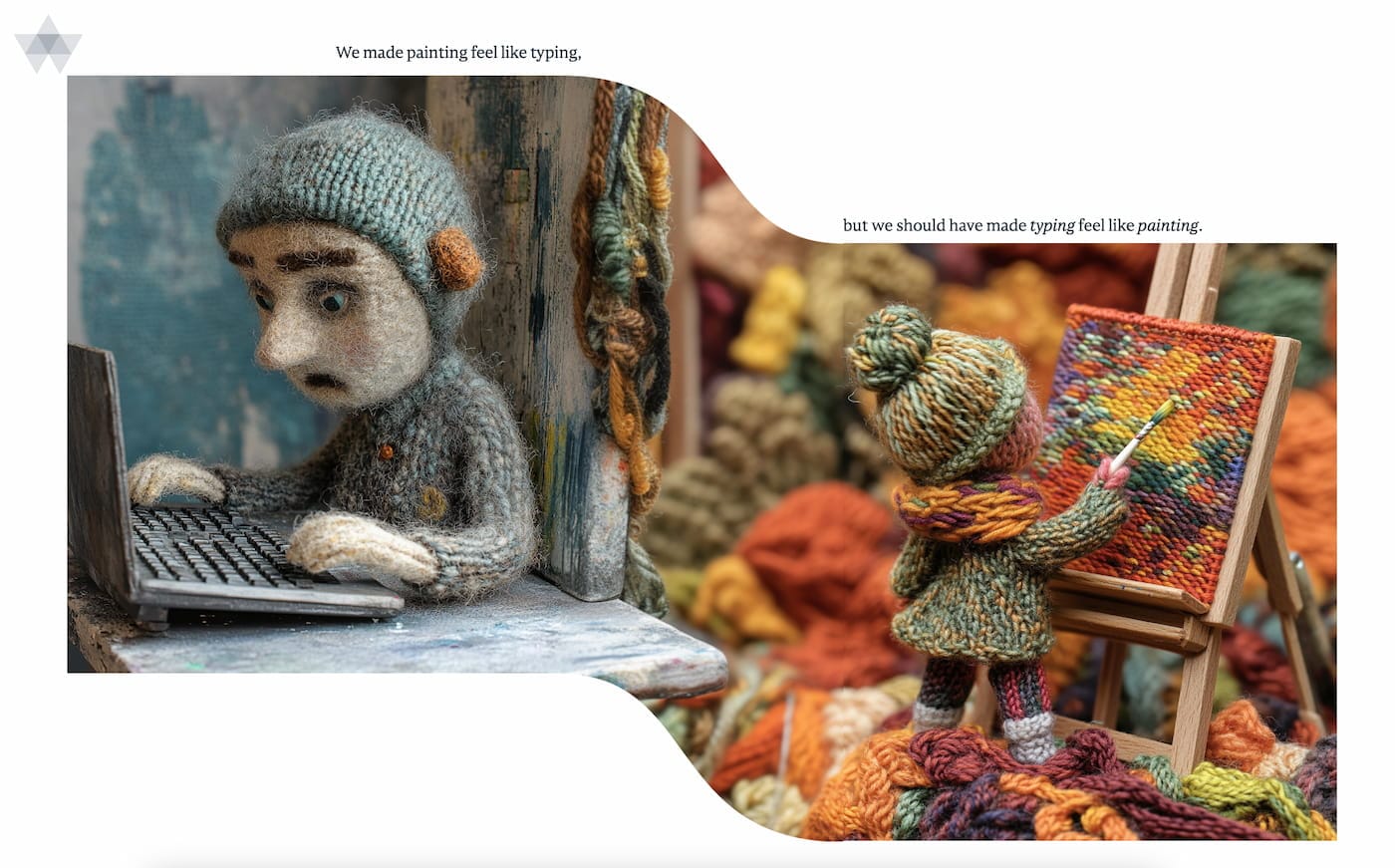
Ojisan Trading Cards
When my kids were young, we’d chase down hot air balloons, until they landed. And sometimes, after ‘helping’ the balloonist pack up their balloon, the kids would get rewarded with a special trading card—complete with information about that specific balloon and the pilot.
Anyway, I was reminded about those cards after reading about kids in Fukuoka who are obsessed with collecting cards with middle-aged men on them. What a great way to honor these men (selected for their various contributions to the local community), and connect young children with an older generation.

Coincidentally, I’m planning a workshop for next month, and participants will be creating their own “Top Trumps” style trading cards as a way to introduce themselves. 😜
R4nD0m!
Hey, today is Easter! Do you know about Tsougrisma: The Greek Red Easter Egg Game? Now you do!



